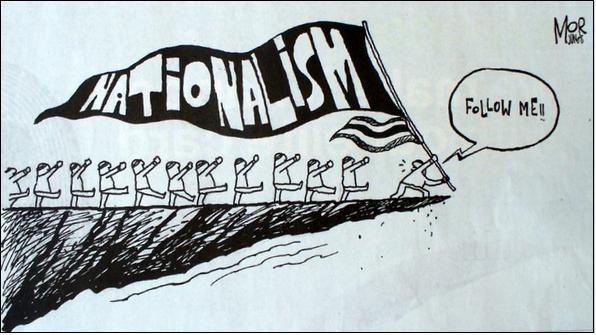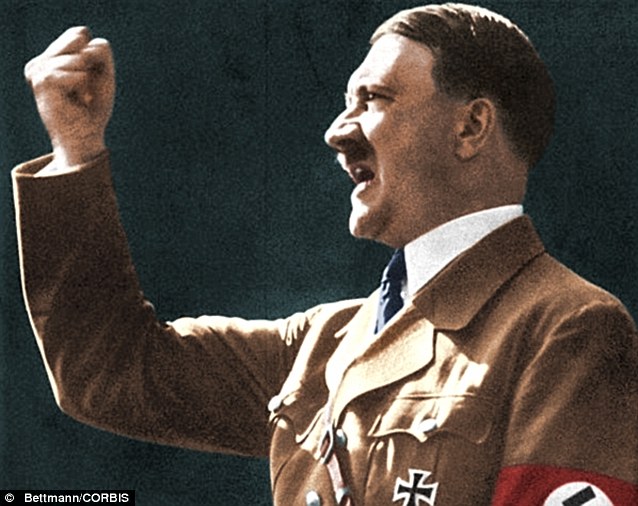U2L2 Nationalism and Ultranationalism
| Site: | MoodleHUB.ca 🍁 |
| Course: | Social 20-1 RVS |
| Book: | U2L2 Nationalism and Ultranationalism |
| Printed by: | Guest user |
| Date: | Friday, 26 December 2025, 9:52 AM |
Description
U2L2
Introduction
Nationalism and Ultranationalism
Key Issues
To what extent can nationalism lead to ultranationalism?
Events such as World War II, the internment of Ukrainians and Japanese in Canada, and the conscription crisis in Canada have all been the consequences of nationalism, ultranationalism. Even though minority groups had lived in Canada for hundreds of years, they were suddenly seen as the "enemy" once their home countries were at war with the Allies. Also, average citizens were required to sign up for war, called conscription, with the attitude that they should be fighting for their country, and for world peace.
Some people believe that nationalism is a most powerful political force because at some point, ultranationalists move from valuing their own nation and its interests to hostility toward people of other nations. This hostility can endanger international peace.
This lesson introduces students to the concept of ultranationalism, when national interest and ideals become extreme. Overall, this lesson will touch on what ultranationalism is, how it develops and historical/contemporary responses.
 |
TERMS ultranationalism |
Lesson
![]() RESOURCES
RESOURCES
Read and refer to Chapter Six
to help complete this lesson's assignment.
Chapter Six Highlights
The Conscription Crisis
What is ultranationalism?
Ultranationalism Prezi
Propaganda and Ultranationalism
Ultranationalism Prezi
Totalitarian Leaders
![]() LESSON
LESSON
Ultranationalism, like nationalism involves the devotion to one's nation, but is an extreme form of nationalism. it is often characterized by authoritarianism, efforts toward reduction of immigraion, oppression of non-native populations, etc. Ultranationalism often involves the people being fanatically loyal to their nation, and hostile and racist to others nations.
Ultranationalists often promjote their own nhational interests - economic, social and cultural - while ignoring the nationaln interests of other citizens. This exaggerated sense of national interest can cause war, succession and genocide. Throughout
history, societies have experienced ultranationalism and all its negative effects, whether it was Russian, under Stalin, or Germany under Hitler.
| At the beginning of the 20th century, Russia was an absolute monarchy (remember the French Revolution). The Russian Revolution in 1918 resulted in the assassination of the czar and royal family and launched a civil war that brought even more
suffering to millions of people who had already endured great hardship during World War 1. By 1928, Joseph Stalin, a communist, had emerged as the country's leader. One of Stalin's first acts was to confiscate land owned by farmers and create collective farms owned by the state. Those who objected were executed, and an estimated five million people were deported to forced labour camps in Siberia or Central Asia. |
|
Watch the following award winning documentary:
Harvest of Despair Soviet Communism engineered Ukraine Famine Genocide, 1933
In Germany, Adolf Hitler promised that he would restore people's national pride by making their country the leading nation on earth. A skilled speaker who knew how to capture the attention of an audience, Hitler said he would do this by:
- refusing to recognize the Treaty of Versailles
- rebuilding Germany's armed forces and reclaiming lost territories
- restoring the superiority of the "Aryan race" - white Europeans
Nazi propaganda experts used radio, movies, public address systems, and giant posters to present Hitler's image and message to the public. Party members organized central and neighbourhood mass meetings attracting audiences of up to 100,000. At these
meetings, crowds chanted, "Today Germany, tomorrow the whole world."

Watch the following pictorial essay:
In the years leading up to World War II, ultranationalists worked to rid Japan of democracy and to make the country a one-party state ruled by the military. Although Emperor Hirohito - the Son of Heaven - was revered, he was not involved in politics. The commanders of Japan's armed forces decided on the country's national interests and made most of the decisions that took Japan into World War II. Military leaders, for example, made the decision to invade China and to capture territory belonging to other countries. They wanted raw materials to keep Japanese industries going, as well as markets for Japanese products. They justified this territorial expansion by saying that Japan was only doing the same thing as the United States and the colonial powers of Europe had already done. In 1941, General Tojo Hideki became prime minister and transformed Japan into a military dictatorship. An aggressive ultranationalist, Tojo promised that the country would dominate Asia through military might.

Various factors and events often combine to transform nationalism into ultranationalism. Among these are social and economic crises, the emergence of a charismatic leader, and national traditions and myths that promote feelings of superiority.
- Political crisis
- Economic crisis
- Charismatic leaders
- Indoctrination
- Suspension of rights
- Propaganda
- Ultranationalism infects all aspects of a country's life: social, economic, political, cultural, and spiritual. Ultranationalists prey on people's fears and use propaganda to spread hatred. In countries around the world, people have found it difficult to find peaceful ways of overcoming extreme nationalist values and beliefs.
WWII Crash Course
Assignment
 Open the Word document below and label it SS20U2L2.surname
Open the Word document below and label it SS20U2L2.surname
In this document, enter detailed answers for parts A and B as outlined below.
Submit this assignment using the Assignment Folder for U2L2 Ultranationalism.
A. Read pages 149-154 from within the Chapter Six link. Then download and complete PART A and PART B
Responding to Ultranationalism and Ultranationalist Leaders chart assignment.
Answer in enough detail to relay a clear understanding of the concepts.
This assignment requires some research on your own. Here are some links that might be helpful to get you started:
Appeasement
https://ari.aynrand.org/blog/2017/08/25/our-north-korea-policy-appease-embolden-repeat
Appeals to international organizations
http://edition.cnn.com/2008/WORLD/africa/11/13/sbm.dallaire.profile/
Engage in a war
https://www.britannica.com/list/8-deadliest-wars-of-the-21st-century
Peacekeeping
Evaluation and Conclusion
Evaluation
Part A - /25
Part B - /25
Conclusion
There are varying thoughts about how nationalism develops into ultrnationalism, but there is little doubt that at some point positive nationalism can cross a threshold and become a more aggressive, selfish and dangerous type of belief.
